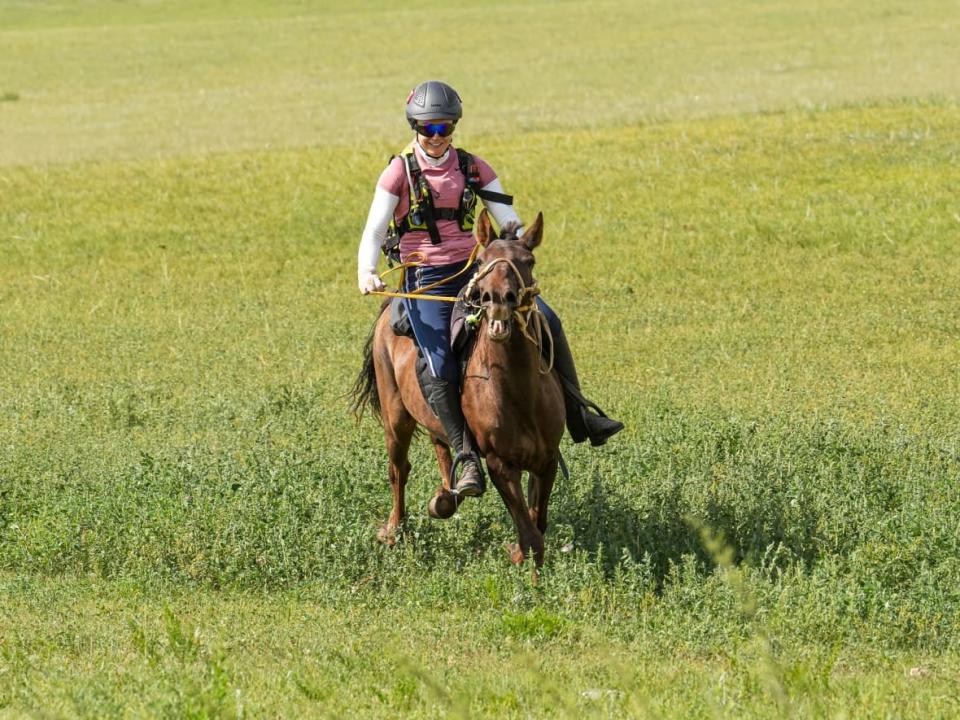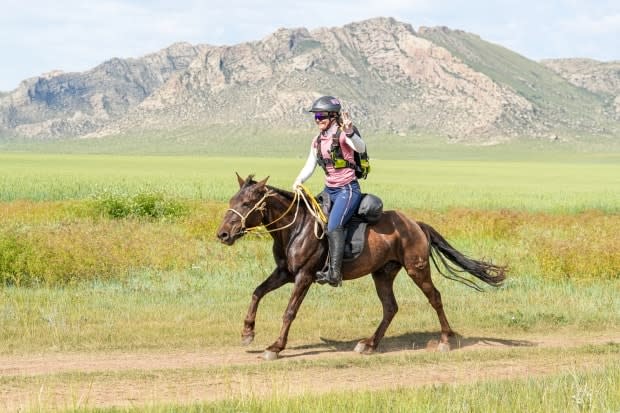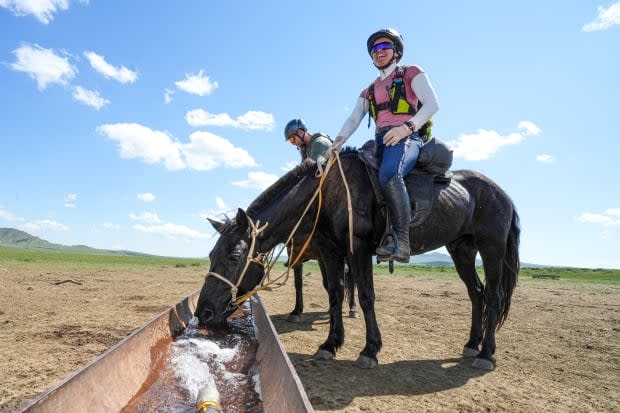Alberta equestrian rides across Mongolian landscape in world's toughest horse race

An Alberta woman spent a gruelling 10 days trekking more than 1,000 kilometres across Mongolia on horseback.
Adele Dobler, a helicopter pilot, was one of 48 riders selected in a lottery of 2,000 applicants to participate in the Mongol Derby, considered the hardest and longest horse-riding race in the world.
Dobler had wanted to compete in a race like the Mongol derby since she was nine years old.
"I'm 36 now, so I've been thinking about it for a long time," she said while on CBC Edmonton's Radio Active.
"I ended up doing about 1,250 kilometres with all the twists and turns involved."
Those who applied to take part in the derby were asked to provide proof of riding capability by submitting photos, videos and passing an interview process.

Dobler, who pilots air ambulances and is contracted by the British military, has been riding since she was five years old.
She admits she has always been that weird horse girl, but she put riding on pause to pursue her career in aviation.
"Once you get that lottery seat, it's like, 'Well, better buckle up and get ready for this one,'" Dobler said.
Derby well respected
The Mongol derby is well respected in the equestrian world, Dobler explained.
The horses participants rode are all feral, spending most of the year in the wild during the wintertime. They were rounded up for the race in the summer.

Riders aren't allowed to use crops or spurs, and if they harm the horse in any way they are disqualified.
"The horse's heart rate has to come down to about 50 beats per minute, so you can't just thrash the horses," Dobler said.
Race recreates former postal system
The derby is a recreation of Genghis Khan's pony express, a postal system that delivered messages in record time thanks to yams.
Yams were stations situated every 40 kilometres that had fresh horses for messengers to ride.
Every 40 kilometres, Dobler would walk up to the herder and ask for a fast horse — and hope she got one.
"You can see some of the horses had been used before, like they'd have girth marks or you could see they've had a bridle on them," she said.
Asking for a fast horse was the only Mongolian she learned, she added.

Each participant wound up riding about 30 horses through diverse terrain: rolling mountains, sand dunes and rivers. Racers also bore the brunt of harsh weather changes, such as downpours and wind.
The Mongolian landscape and weather which reminded Dobler of southern Alberta, making her homesick.
The race tests human endurance, not that of the horses, she said, adding "it's a bit ridiculous" to ride horses for up to 12 hours for 10 days in a row.
Dobler contracted food poisoning halfway through the race. Some riders got hypothermia, others suffered heatstroke. And there was lots of chaffing.
There were "biblical saddle sores that were going around," she said.
In the end, Dobler tied for 15th place.
But her personal goal was to finish the race without injuring herself, which she achieved.
LISTEN | Mongol Derby:

 Yahoo Sports
Yahoo Sports 